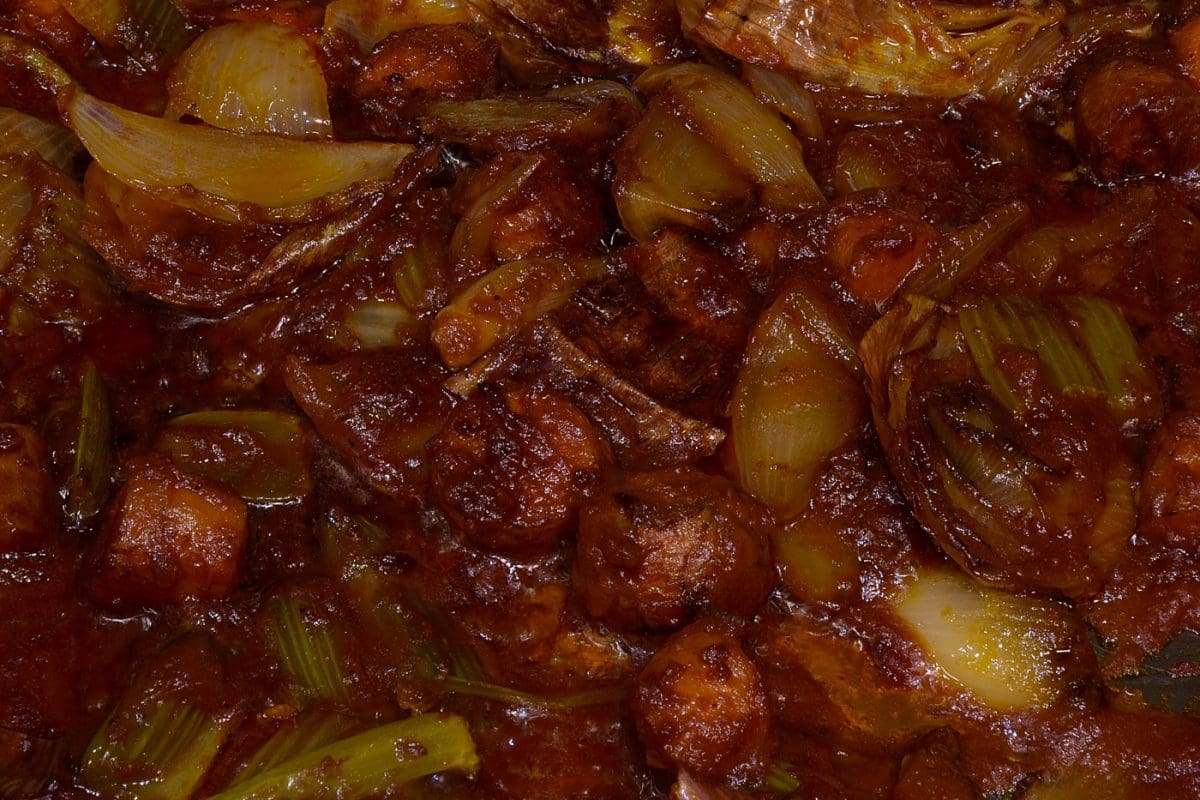Procedure:
Preheat oven to 350 F/176 C.
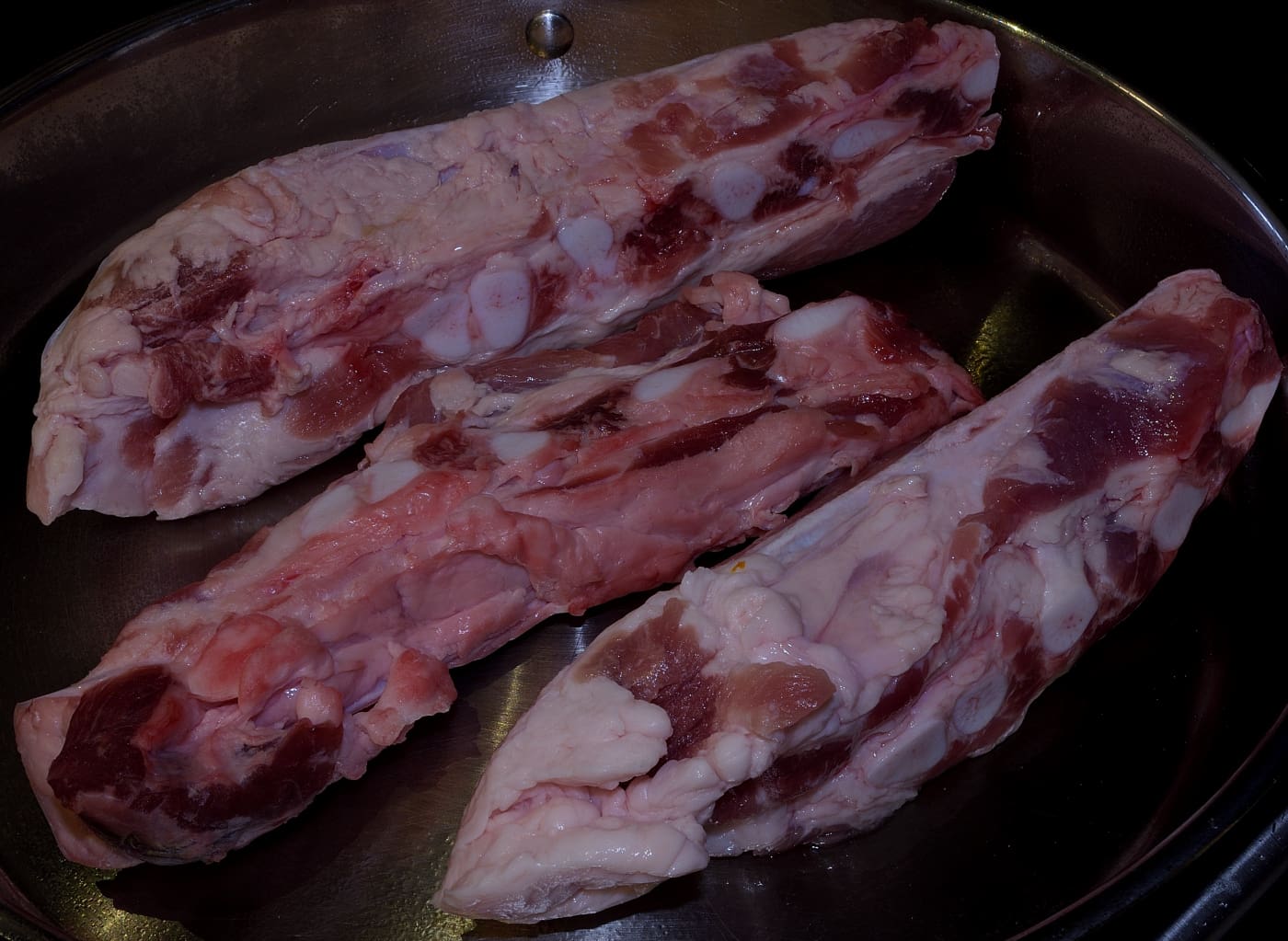
Stage bones into pan.
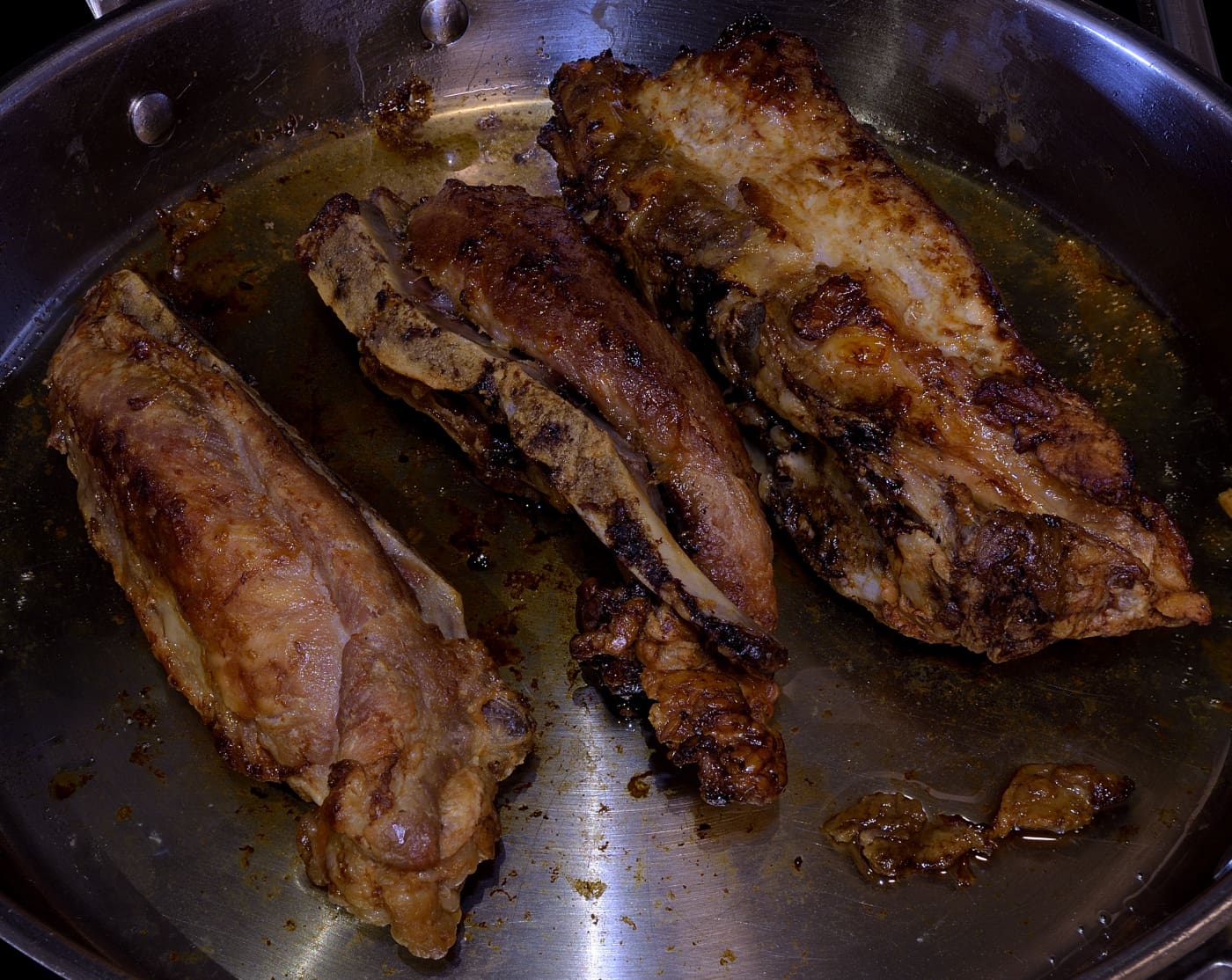
Roast until well browned and cooked through–approximately 1 hour. Remove the bones and set aside.

Add the carrots and celery to the pan, return to the oven or continue on a stove burner on medium high heat–remember that the handle is HOT.
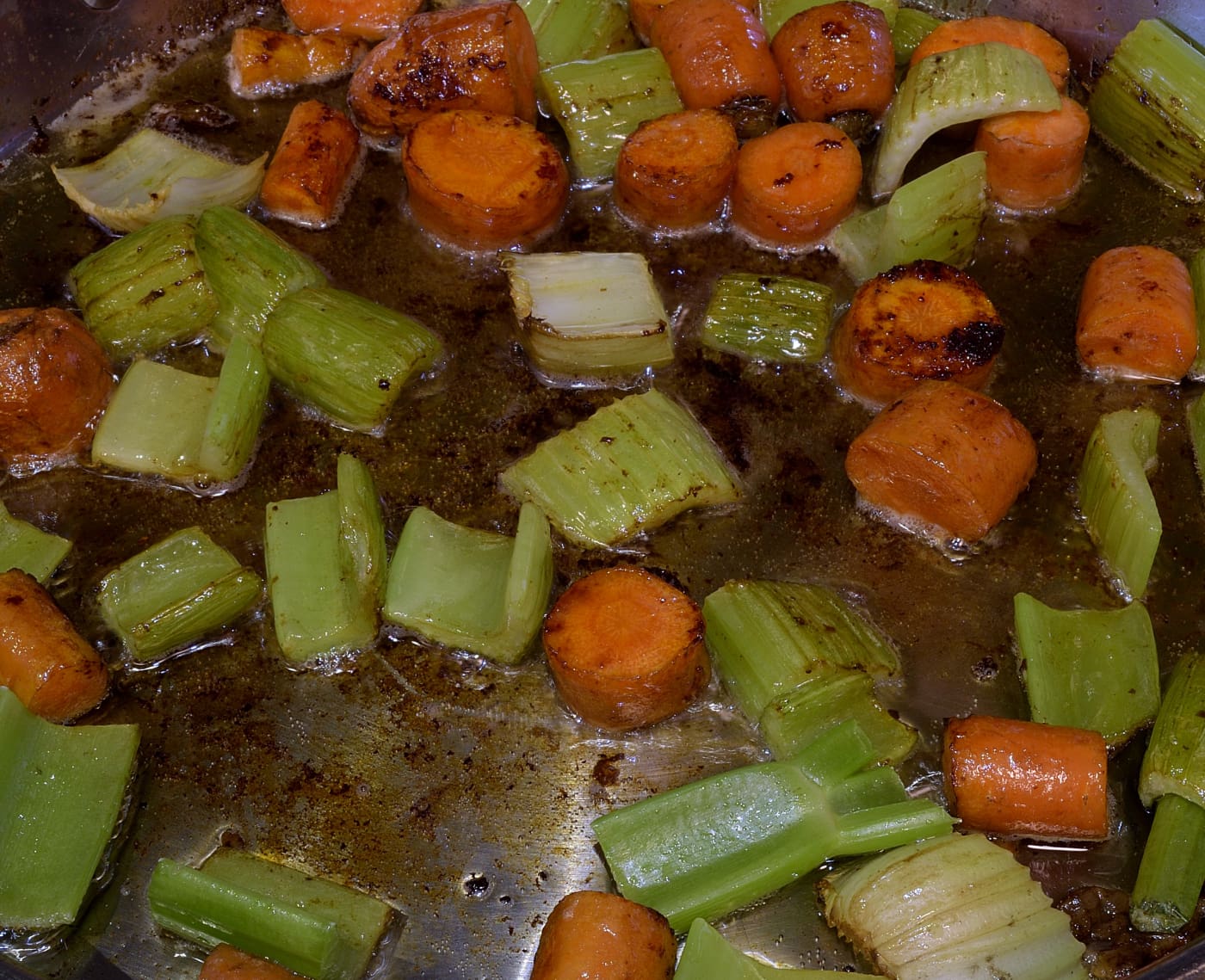
Fry/roast until brown.
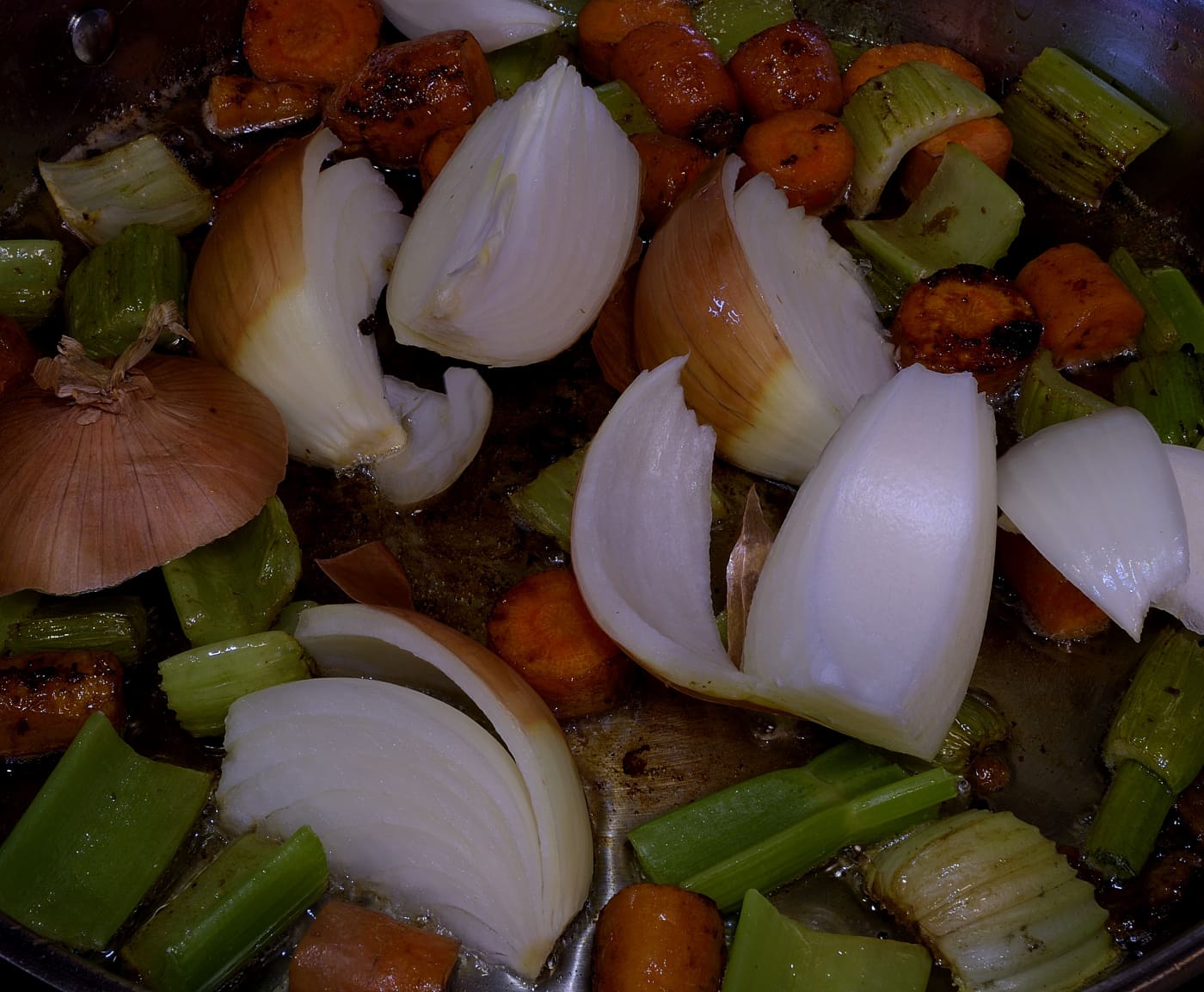
Add the onions, stir to coat, continue frying/roasting.
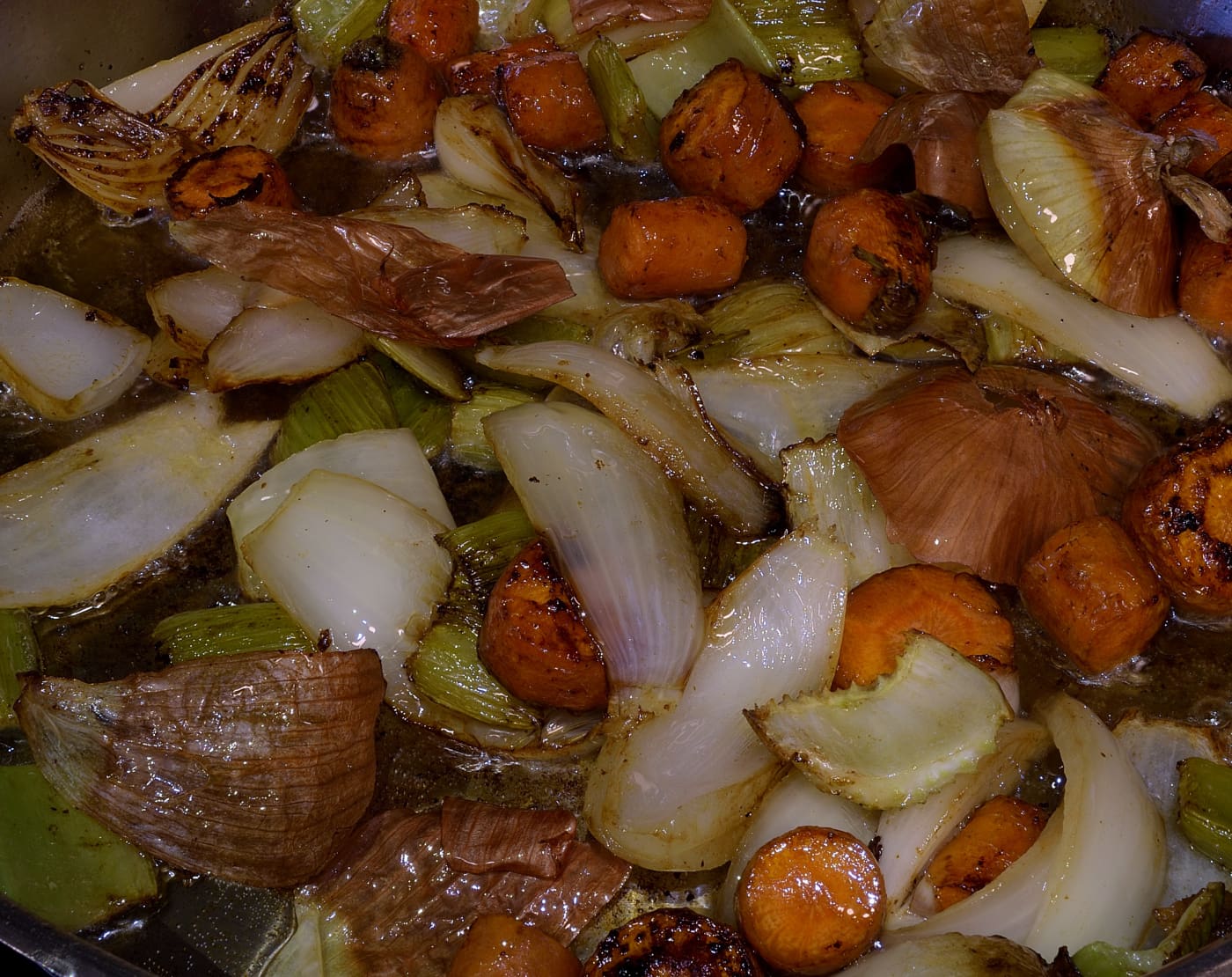
The vegetables should be fully cooked and brown on all surfaces. Patience is key.
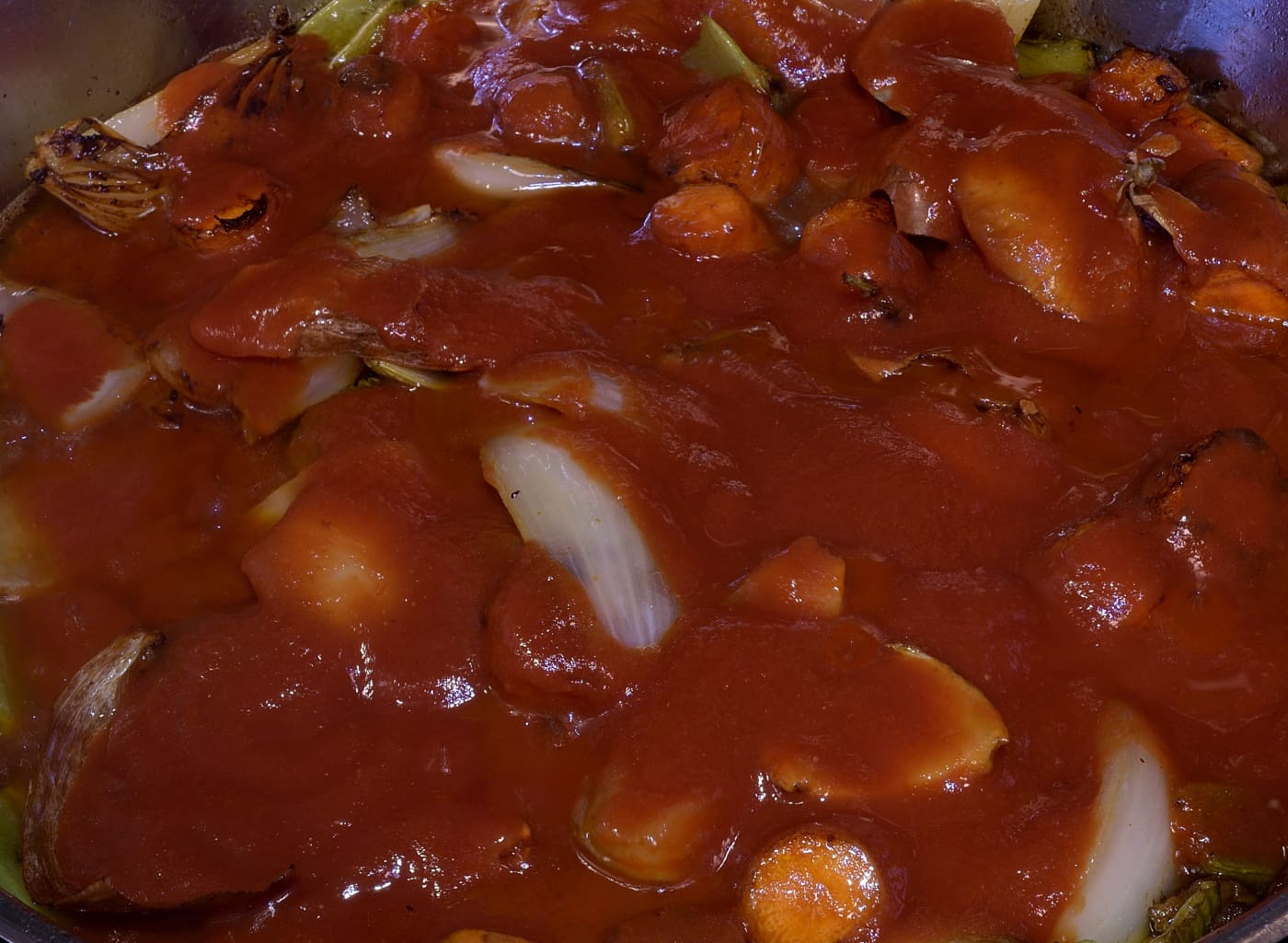
Add the tomato sauce, continue the cooking process.
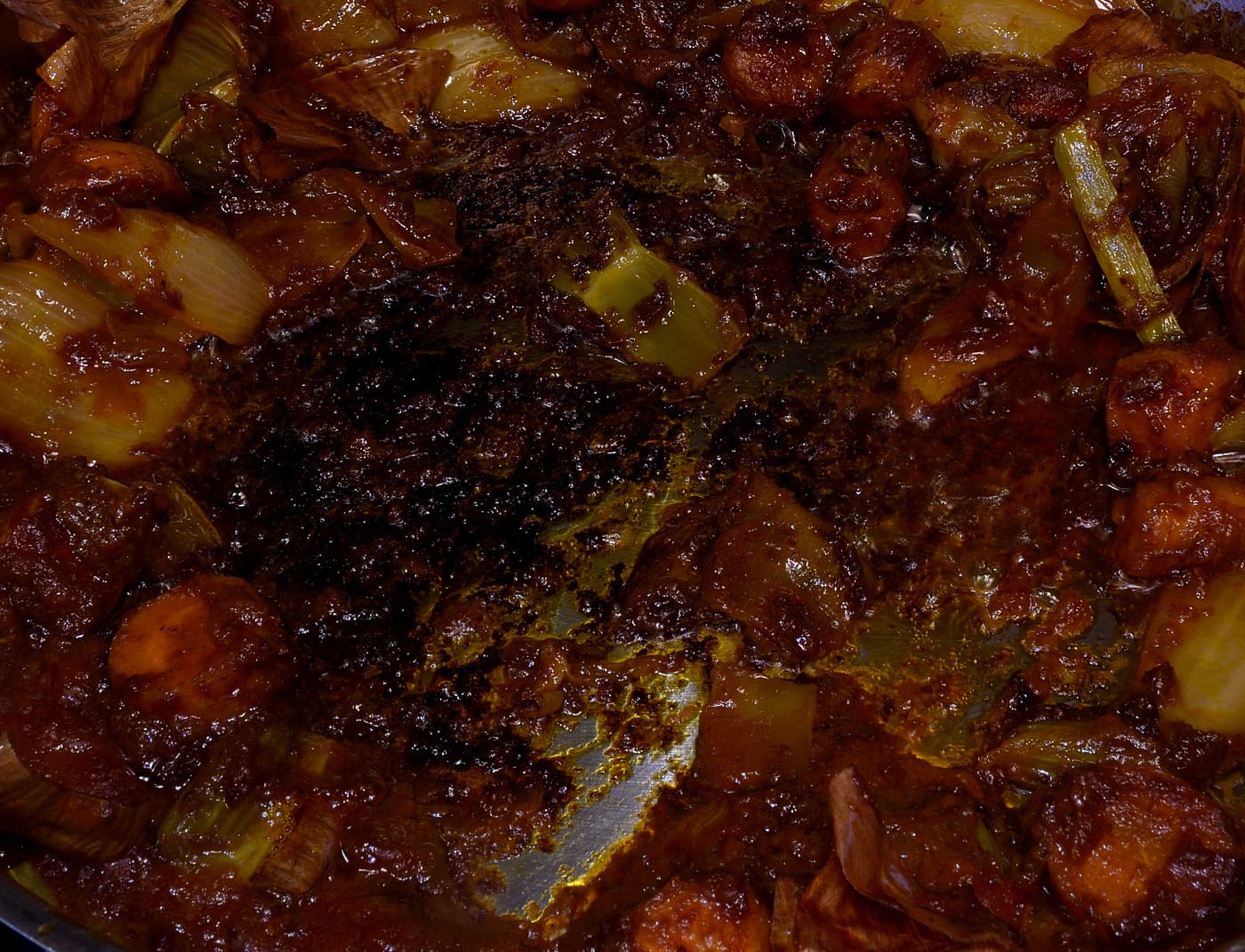
Eventually, a crust will form on the bottom of the pan.
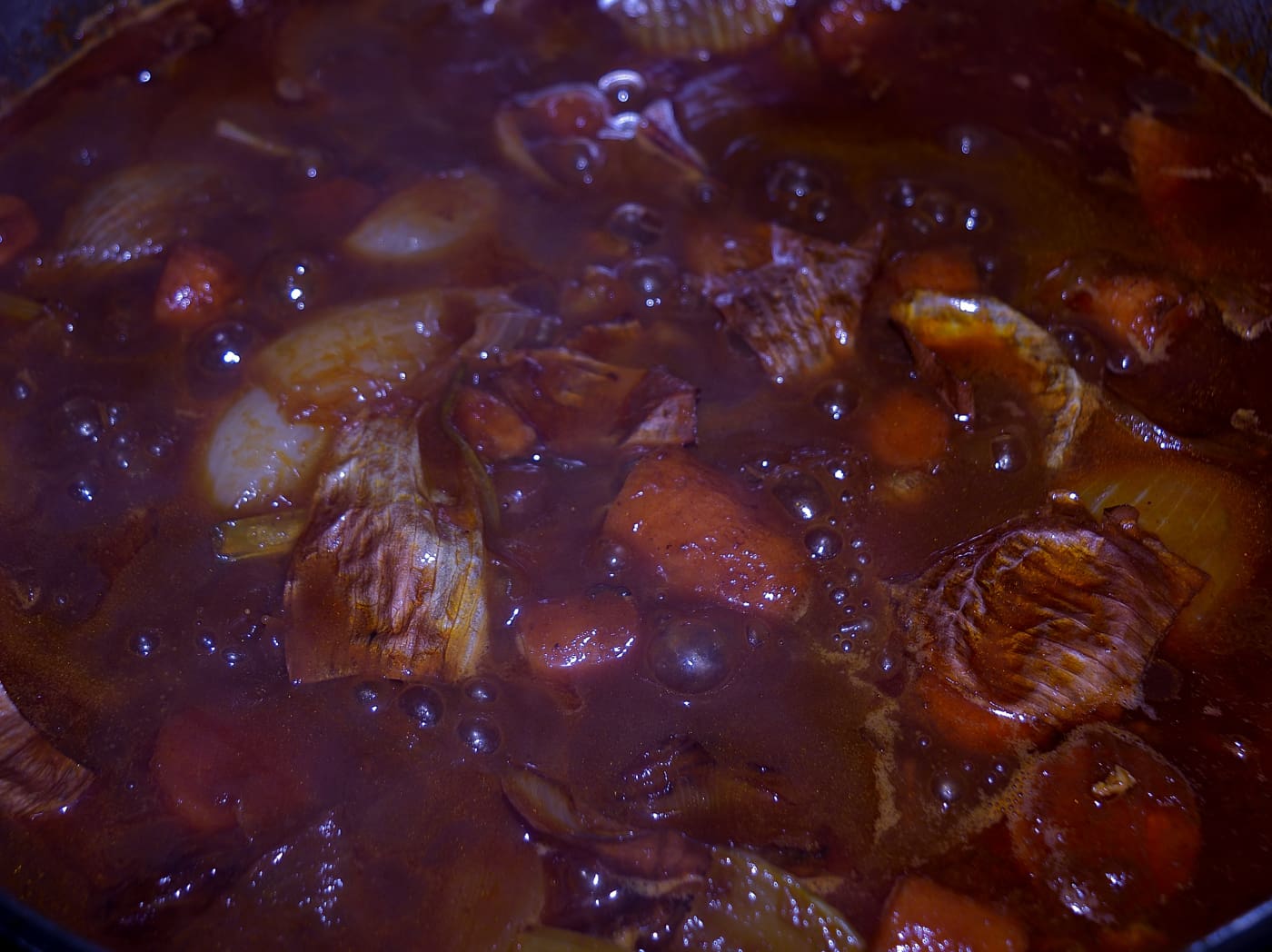
Add the red wine.
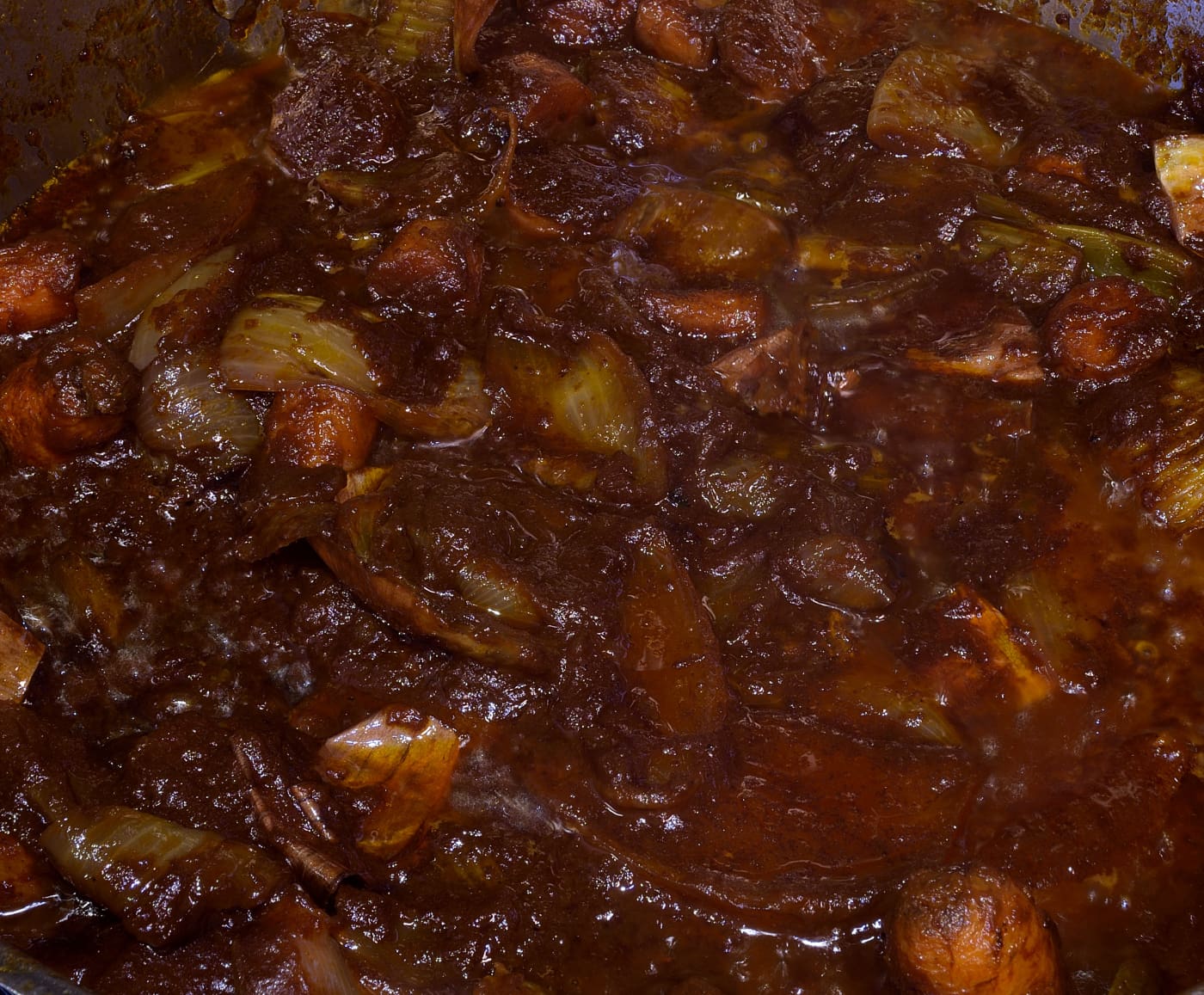
Reduce the wine completely–wine provides flavor and even color, but not volume.

Add the bones and cover with 2 quarts/2 liters water.
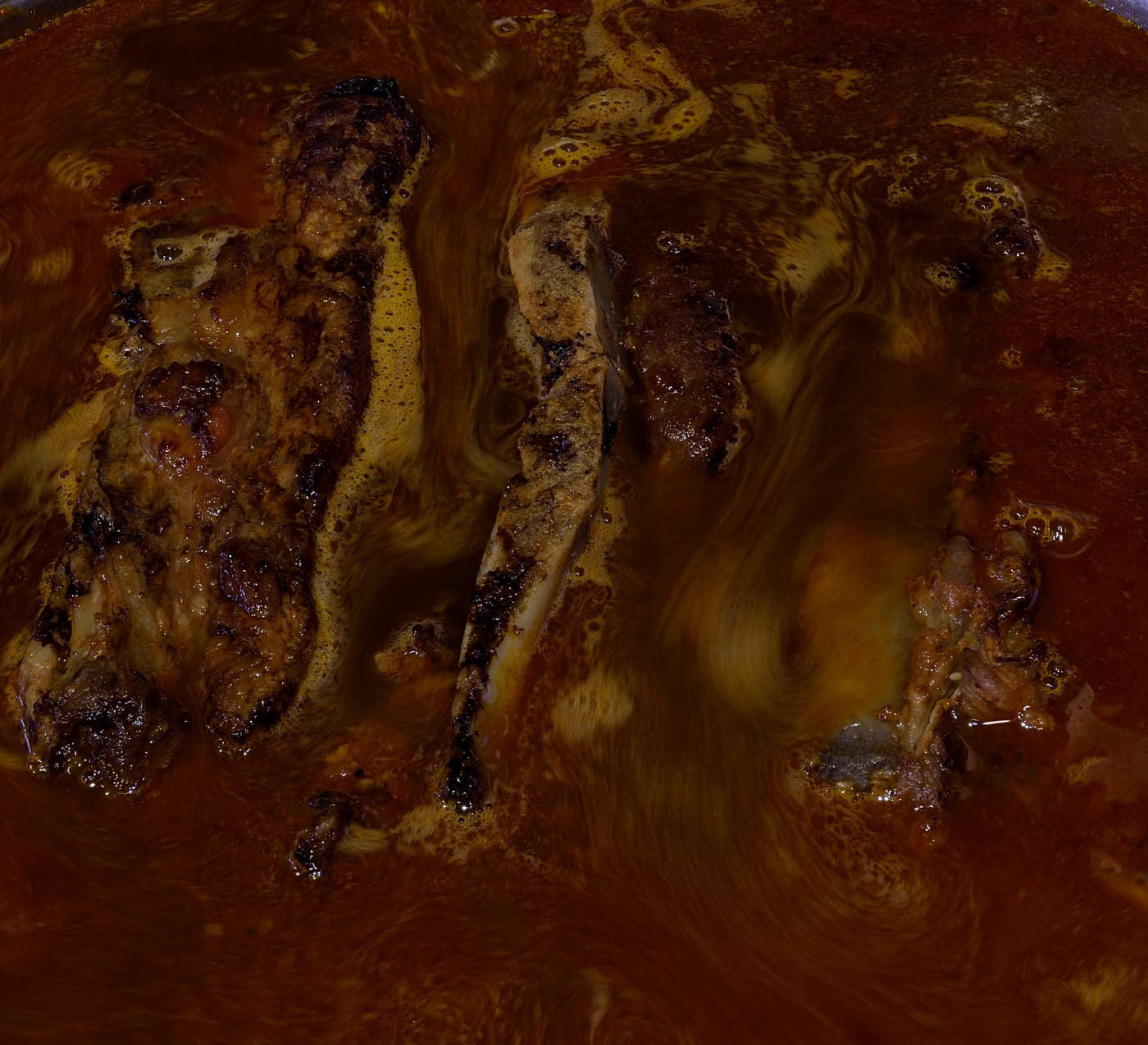
Bring to a boil and simmer at least four hours. Strain the stock and cool to 70 F/21 C before refrigerating at 40 F/4 C. Skim the fat, season and utilize as needed.
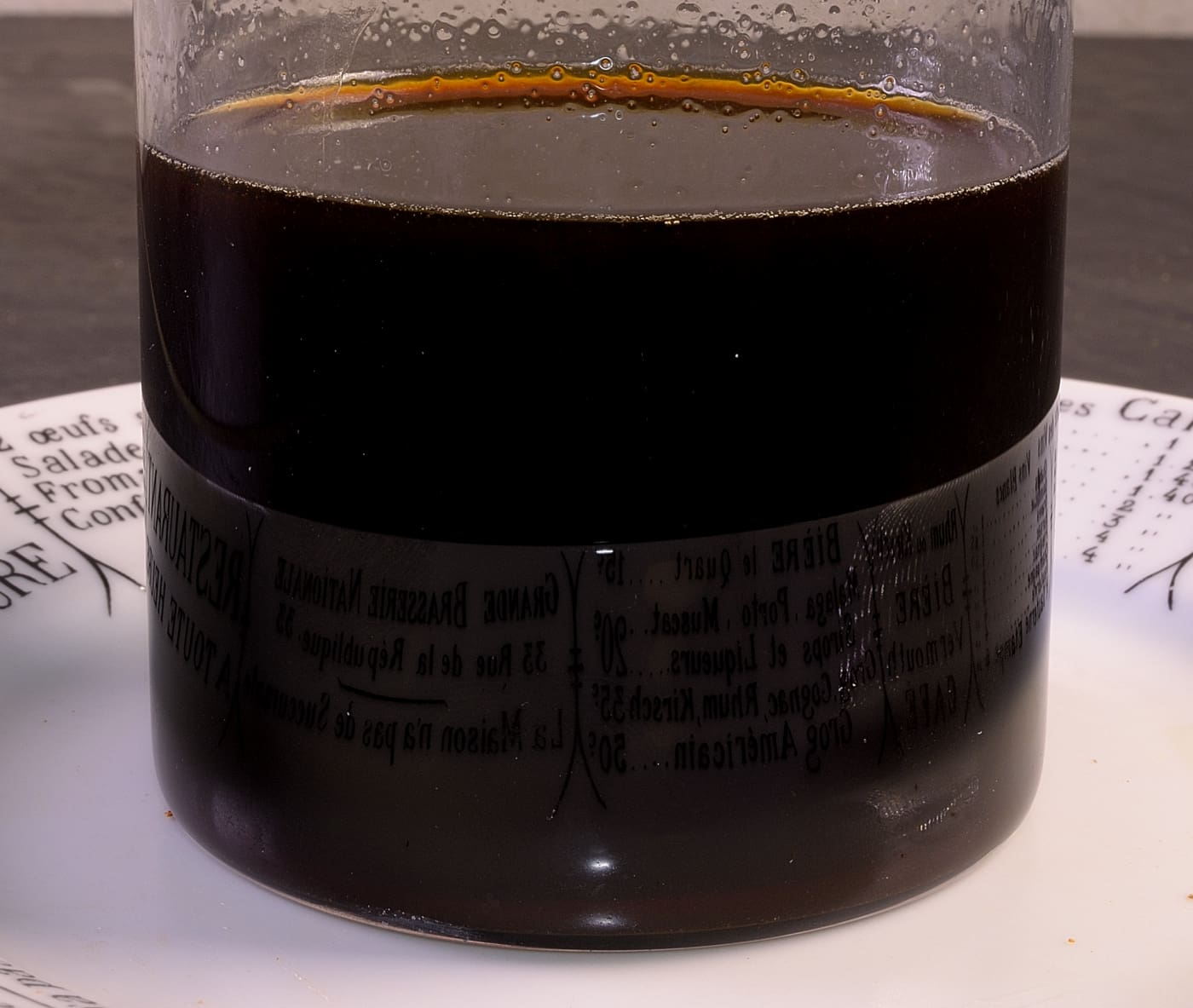
If desired, clarify according to the procedure explained HERE.
